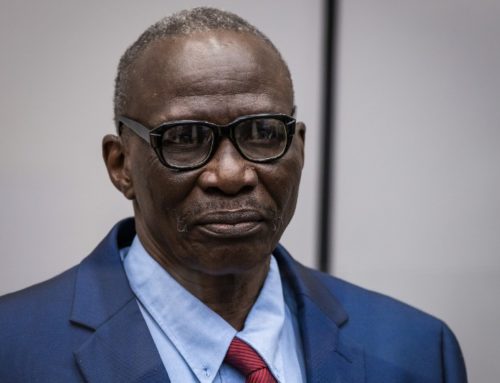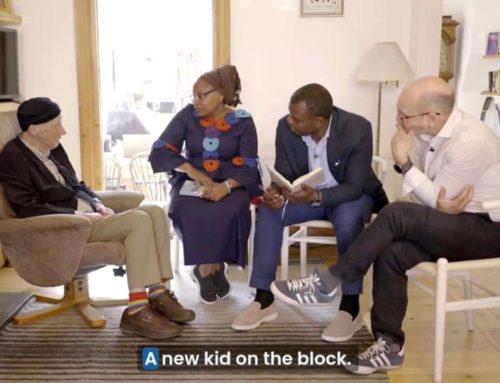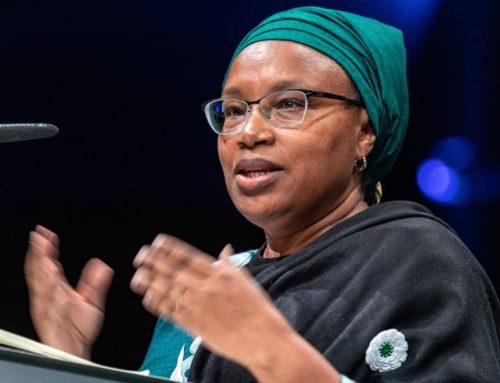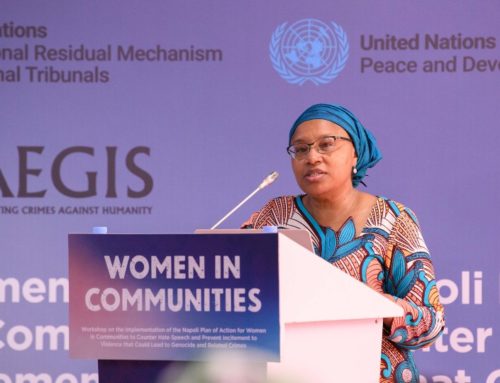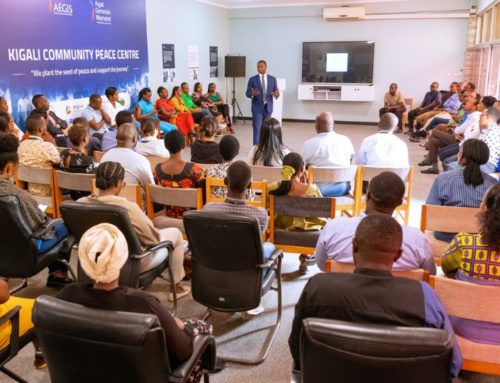 9 Sep 2010 – Foreign Policy Article by the Aegis Trust’s Head of Campaigns Nick Donovan
9 Sep 2010 – Foreign Policy Article by the Aegis Trust’s Head of Campaigns Nick Donovan
The film Marathon Man is one of the great paranoid thrillers of the 1970s, infamous for the scene in which the Nazi dentist played by Lawrence Olivier drills through Dustin Hoffman’s teeth into his live nerve below, repeatedly asking “Is it safe?” This is the stuff of Hollywood horror films, but another scene is more plausible: Olivier — whose character is loosely based on S.S. doctor Josef Mengele — ventures into New York’s diamond district, where he is recognized by Holocaust survivors. One elderly woman, slowly at first and then with increasing hysteria, begins shouting at passers-by to stop him before he escapes.
Like the woman in the film, many victims of modern-day atrocities have sought asylum in North America or Europe — and so have their persecutors. More than once, the Marathon Man scene has played out in reality. Ethiopian refugee Edgegayehu Taye was working as a waitress at the Colony Hotel in Atlanta, Georgia, when she saw her former torturer, a man who had supervised while she was whipped with a plastic cable, standing by the elevator in a gray bellhop’s uniform. Eugenio de Sosa Chabau was tortured 14 times by a man named El Enfermero, “The Nurse,” for his opposition to Castro’s rule in Cuba. After 21 years of imprisonment, de Sosa finally managed to flee to Florida. Visiting his elderly aunt at a nursing home in Miami, he was startled to see El Enfermero there — now wearing the white uniform of a real nurse.
Today, authorities estimate that there are at least 1,000 war crimes suspects in the United States, and the real number is probably much higher. British immigration officials have taken action against 513 suspects in the last four years. Just like refugees, oppressors often flee at the end of conflict. Disguised, flying under the immigration radar, they enter North America and Europe.
In Britain, Italy, and France, alleged Rwandan génocidaires have been found working as doctors, priests, and even once as a member of a government task force. After being convicted in absentia for his role in a massacre in 1994, Haitian Maj. Gen. Jean-Claude Duperval was eventually found operating tourist boats in Disney World. Another suspected perpetrator in the same massacre won $3.2 million in the Florida State Lottery in 1997 before being deported a few years later. Three years ago, the alleged chief interrogator at a torture center in Argentina was found running a genteel antiques shop in The Plains, Virginia.
Some of this may be inevitable: There are a lot of war criminals out there — and, because the technology of mass murder has become less sophisticated in recent years, the number is growing. In the Nazi extermination camp at Belzec, it took 150 S.S. guards nine months to gas up to half a million Jews. Modern-day, low-tech mass atrocities, by contrast, involve hundreds of thousands of killers. In Rwanda, it is estimated that there were perhaps 200,000 génocidaires in the 1994 slaughter, while 20,000 Sudanese are thought to have taken part in atrocities in Darfur, Sudan.
Very few of these people have ever been brought to trial, especially when you look beyond the high-profile examples. Academics estimate that between 92 and 101 million people died in 313 conflicts since 1948. While the perpetrators of these deaths number in the hundreds of thousands, only 823 suspects have been indicted by internationalized tribunals and courts. Some of the rest have been brought to trial in their own countries, but many of them are still at large.
Responses to this problem have varied. Saudi Arabia has actively harbored mass murderers such as Idi Amin. Other states, like Kenya, are accused of turning a blind eye to the presence of men such as Félicien Kabuga, the alleged financier of the Rwandan genocide. Even for those states ostensibly committed to punishing atrocity crimes, the response has often been anaemic. The first line of defense is meant to be extradition, sending alleged perpetrators back home to face trial in their own countries. But often, this isn’t possible. When a janjaweed militiaman from Darfur turned up in Britain in 2006, he couldn’t be sent home to be tried, as the Sudanese government had sponsored the very same attacks he carried out. While many suspected Rwandan génocidaires have been found in Europe, courts haven’t returned them for fear they would not receive a fair trial. Neither can suspects be sent to The Hague. The International Criminal Court only deals with a handful of high-level defendants and the tribunals for Rwanda and Yugoslavia are closing their doors.
If extradition or deportation is not possible, trials on the spot are the only alternative to impunity. However, while many states are able to prosecute, they are often unwilling to do so, as the trials can be complex and costly. Britain has comprehensive laws that it fails to enforce. Four alleged Rwandan génocidaires continue to live freely there 18 months after a failed extradition attempt.
Conversely the United States has gaping holes in its legal framework but is much more vigorous in its pursuit of perpetrators. U.S. prosecutors rely on an “Al Capone” approach, for example prosecuting human rights violators for lying on their visa applications. This approach has worked for around 100 suspects. For instance Marko Boskic, one of the shooters in a firing squad alleged to have executed over 1,000 Muslim men and boys from Srebrenica, was arrested in Massachusetts, jailed for immigration offences, and then deported to face prosecution for crimes against humanity in Bosnia. However, this approach could lead to ridiculously lenient sentencing for suspects who can’t be deported. For example, former Somali officials such as Prime Minister Mohamed Ali Samantar, now living in Virginia, can’t be sent home to face justice because there is no functioning court system in that failed state. There is a strong case for filling in the gaps in U.S. law by passing a Crimes Against Humanity Act and updating war crimes legislation.
The 1998 arrest of former Chilean dictator Augusto Pinochet excited great hope that the age of impunity for former leaders was at an end. Henry Kissinger feared diplomatic chaos. But the reality was more prosaic. The years following Pinochet’s arrest have seen neither chaos nor utopia, but rather a slow and steady increase in the number of laws passed and prosecutions attempted. Driven largely by the discovery of old Nazis, Rwandan génocidaires, and Balkan war criminals, extra-territorial prosecutions have been carried out in Canada, Finland, Belgium, France, Switzerland, the Netherlands, Denmark, Norway, Austria, and Spain. Meanwhile countries as diverse as Senegal, the Philippines, and South Africa have passed laws which allow for the prosecution of foreign war criminals. This process should be accelerated by the proposed specialist Convention on the Prevention and Punishment of Crimes Against Humanity. The convention would require states to pass legislation which allows for the prosecution or extradition of those suspected of crimes against humanity.
Currently, there are génocidaires, war criminals and torturers living among us. Let us hope they are found and tried before their victims bump into them.
Read the original article at Foreign Policy magazine

